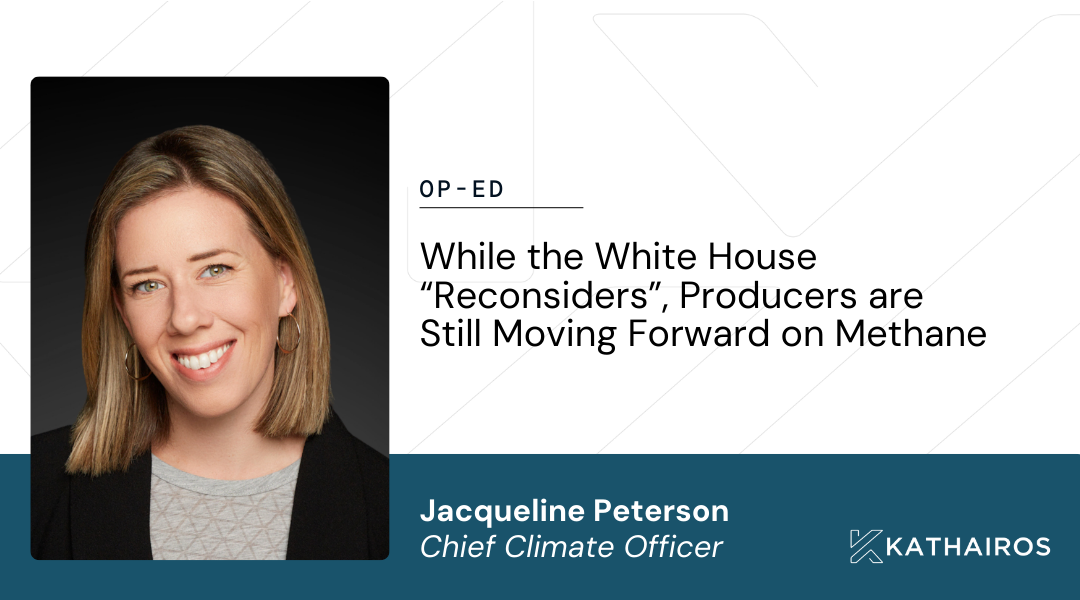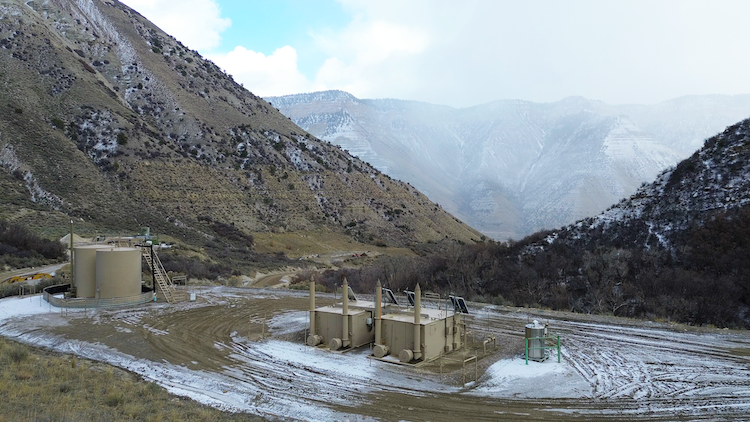
Kathairos has emerged as the leading North American solution for methane elimination from pneumatics, with more than 1,000 systems in operation across North America and over 40 major oil and gas producer partners.
In this post
Canada formally pledged to reduce its national greenhouse gas emissions by 40-45% below 2005 levels by 2030 during the United Nations COP26 climate conference held in 2021.
The ultimate end goal? To achieve net zero emissions by 2050.
With ambitious targets and a lack of substantial concrete policies in place to support widespread emissions reduction, one question comes to mind: are Canada’s goals for cutting greenhouse gas emissions achievable?
THE ROAD SO FAR
Canada made its first real commitment to reducing emissions in 2002 with the ratification of the Kyoto Protocol. This landmark pledge saw Canada agree to cutting total greenhouse gas emissions by 6% below 1990 levels by 2012.
In actuality, Canada’s national emission levels have remained largely constant, with a small decrease of 1% observed between 2005 and 2019.
The oil and gas industry remains the largest contributor to national emission levels, having increased 20% over a 15-year period.
The problem? Strong policies drive innovations and investments in emissions reduction… and up until recently, this has been the missing puzzle piece to the reduction conversation.
CUT IT OFF AT THE SOURCE: THE PRODUCTION DILEMMA
Most climate experts agree that stronger regulations within the oil and gas industry will be key in reaching Canada’s ambitious reduction targets.
While capping emissions is critical, some experts suggest that the government needs to take even more drastic measures: namely, we should tackle the emission problem right at the source, by restricting production.
A recent report compiled by Environmental Defence suggests that oil and gas companies are expected to increase annual production by nearly 30% over the next decade, compared to 2020 levels. In addition, jobs in the oil and gas industry are on the rise as many companies boast record profits.
The resulting growth in production of oil and gas certainly counteracts the national goal of tackling emissions reduction, and even falls out of line with what the International Energy Agency outlines as a key strategy toward limiting warming to 1.5 degrees Celsius.
Initiatives likes carbon pricing have great potential in advancing climate reduction targets at the domestic level, but many experts also suggests that a number of additional policies and actions must be implemented alongside this strategy in order to make a meaningful difference.
THE INDUSTRY APPROACH
The Oil Sands Pathways to Net Zero initiative is a ground-breaking and unprecedented alliance between five of Canada’s largest oil and gas producers, outlining a shared goal of achieving net zero emissions from oil sands operations by 2050.
One of the ways these producers aim to achieve this ambitious target is by continued investment in technologies designed to improve the company’s environmental performance, by reducing its emissions footprint.
The development of several technology pathways and innovative solutions are meant to strengthen participating producers’ ESG (Environmental, Social and Governance) performance through meaningful emissions reductions, while at the same time maintaining jobs in the oil sands sectors and creating thousands of new roles related to construction, energy management and cleantech development.
What is crucial moving forward is continued backing from both provincial and federal governments in order to support these emissions reduction strategies and meet ambitious targets.
THE DEFINING DECADE
In short: we have reason to be hopeful. Not only is it possible to meet national emissions reduction targets, it’s possible to exceed it.
Scientific models developed by Climate Action Network Canada suggests that it is possible for Canada to reduce emissions by as much as 60% compared to 2005 levels by 2030.
These models suppose significant international and domestic reduction initiatives, including greater fuel efficiency and electrification in transportation, greater investment in clean tech and efficiency upgrades in existing technologies.
One thing is for certain: we’ve talked the talk about climate action for the past two decades, and now it feels like we’re finally walking the walk.
If governments, industries and companies continue to put policies in place to meaningfully reduce emissions, then there is plenty of reason to be optimistic about meeting Canada’s targets for a decarbonized future.
Explore more posts from Kathairos
.jpg)
Decarb Digest, Issue 01: Discover Why Energy Leaders Aren’t Waiting on Washington

Op-Ed: While the White House “reconsiders”, producers are still moving forward on methane

